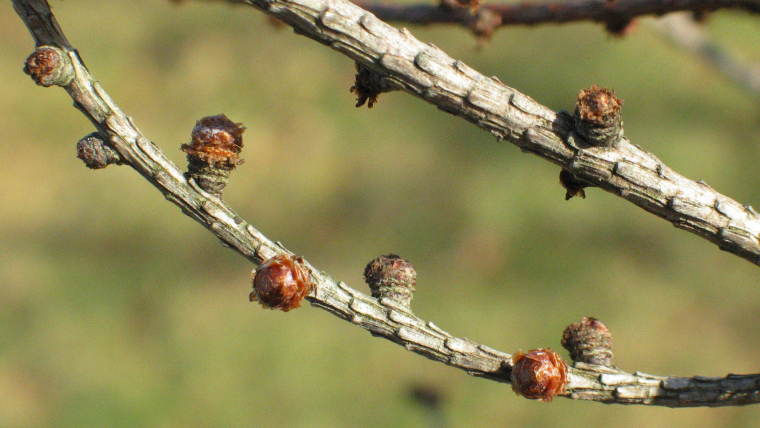
In a nutshell
Temperate woody plants require a certain amount of heat, called a heat requirement, to begin leaf growth after their period of winter dormancy. For many plants, it appears that this heat requirement is related to temperatures in the preceding winter. If the winter is long and cold, less warmth in the spring is needed to bring the plant out of dormancy. Conversely, a warm winter characterized by few cold nights ends up delaying leaf out, as these plants require more spring warmth to prompt leaf growth. Under increasing temperatures in the Northern Hemisphere, many temperate woody plants may no longer be exposed to the necessary cold temperatures in winter to meet their chilling requirement, leading to delays in leaf-out.
This study used on the ground phenology observations, including the USA-NPN’s long-term lilac dataset, to determine the heat requirement for leaf-out in different woody species. Over the period of 1980-2012, the timing of leaf-out in the 13 woody species studied advanced by 13 days. However, the heat requirement increased by 50%, which actually offset some of the trend in earlier leaf out.
And how does heat requirement interact with other environmental cues, such as day length, light intensity, and precipitation, to affect spring phenology? The authors found a positive relationship between precipitation and heat requirement, implying that under wetter conditions, more heat is needed to trigger leaf-out.
What is special about this study?
The authors attempt to disentangle the effects of heat requirement from other environmental factors that influence timing of spring phenology events. While there is some understanding of the relationship between heating and chilling requirements, this study also looks at the influence of precipitation and light. Knowledge of the relative importance of these factors can help determine how spring leaf-out is affected by changing climate.
What does this mean for YOU?
The leaf phenology observations that you collect through Nature’s Notebook are valuable to scientific research. This study shows us that phenological response to climate change is not always simple! Better knowledge about heat requirements of plants can help predict how ecosystem carbon and water balance will respond to climate variation. For example, knowing that plants will leaf-out late and have a short growing season would mean less carbon uptake. The best way to increase our understanding of these complex topics is by evaluating species-rich long-term datasets collected across large areas – like the data curated in Nature’s Notebook.
Citation: Fu, Y., Piao, S., Vitasse, Y., Zhao, H., De Boeck, H. J., Liu, Q., Weber, U., Hanninen, H., and Janssens, I. A. 2015 Increased heat requirement for leaf flushing in temperate woody species over 1980-2012: effects of chilling, precipitation and insolation. Global Change Biology